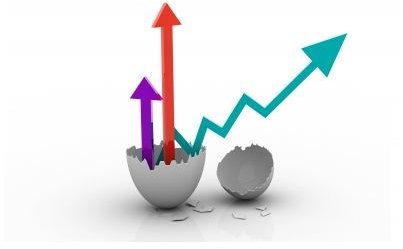What is the Business Cycle: The Six Stages
Business Cycle Overview
A business cycle refers to the periods of business expansion and contraction. When the business cycle expands, it goes through the three
stages of recovery, boom, and peak. When the business cycle contracts, it goes through the stages of recession, depression, and trough.
For economic purposes, a business cycle refers to businesses of all industries combined so that economists can make assumptions about the present and future state of the economy. However, business cycles can also be segmented to particular industries so that business owners can obtain information more directly related to their companies.
The underlying force of the business cycle is supply and demand. Businesses must adjust their supplies of inventory based on the level of customer demand. When customers feel nervous about the state of the economy, they reduce their spending. When customers reduce their spending, then businesses must reduce their levels of inventory, cut costs, and possibly lay off employees.
Entrepreneurs should consider the business cycle before starting their business so that they can adjust their entrance accordingly. For instance, when starting businesses during the peak stage, entrepreneurs need to be prepared for the upcoming decline in consumer demand. Operations should be lean and excess inventory levels avoided.
Expansion Stage of the Business Cycle
The expansion stage of the business cycle refers to an increase in activity.
- Recovery. Consumers gain confidence in the economy and start to make small purchases. This increase in activity encourages businesses to start investing in additional inventory, increasing their output, and hiring employees.
- Boom. Consumers start to buy more goods and make larger purchases. Businesses purchase new equipment and machinery, reward employees, and increase prices.
- Peak. Consumer confidence starts to decline so they stop spending. Businesses reduce their investment into their businesses and keep inventory levels steady.
Contraction Stage of the Business Cycle
This is the stage where consumer confidence and economic activity decreases.
- Recession. Consumer confidence declines a little so people stop purchasing larger items, such as cars and appliances.
- Depression. Consumer confidence decreases at a faster pace so they purchase less of all types of goods. Businesses try to clear their shelves of excess inventory, cut costs, slow production, and lay off employees.
- Trough. Consumer confidence levels off and they want to start making purchases again. Businesses stabilize and start looking into producing more inventory or growing their operations.
Determining the Current Stage of the Business Cycle
The National Bureau of Economic Research (NBER) reports and keeps track of the US business cycle expansions and contractions on a quarterly basis. It provides memos and updates on the current state of the economy, as well as additional data on the business cycle. The NBER is an important resource for entrepreneurs, especially when constructing strategic plans and budget projections.
In order to find out the current business cycle for a specific industry, most businesses must pay for a study to be completed. Most publicly available information is on the overall business cycle, not specific to any particular industry.
Image Credit: FreeDigitalPhotos, Renjith Krishnan
